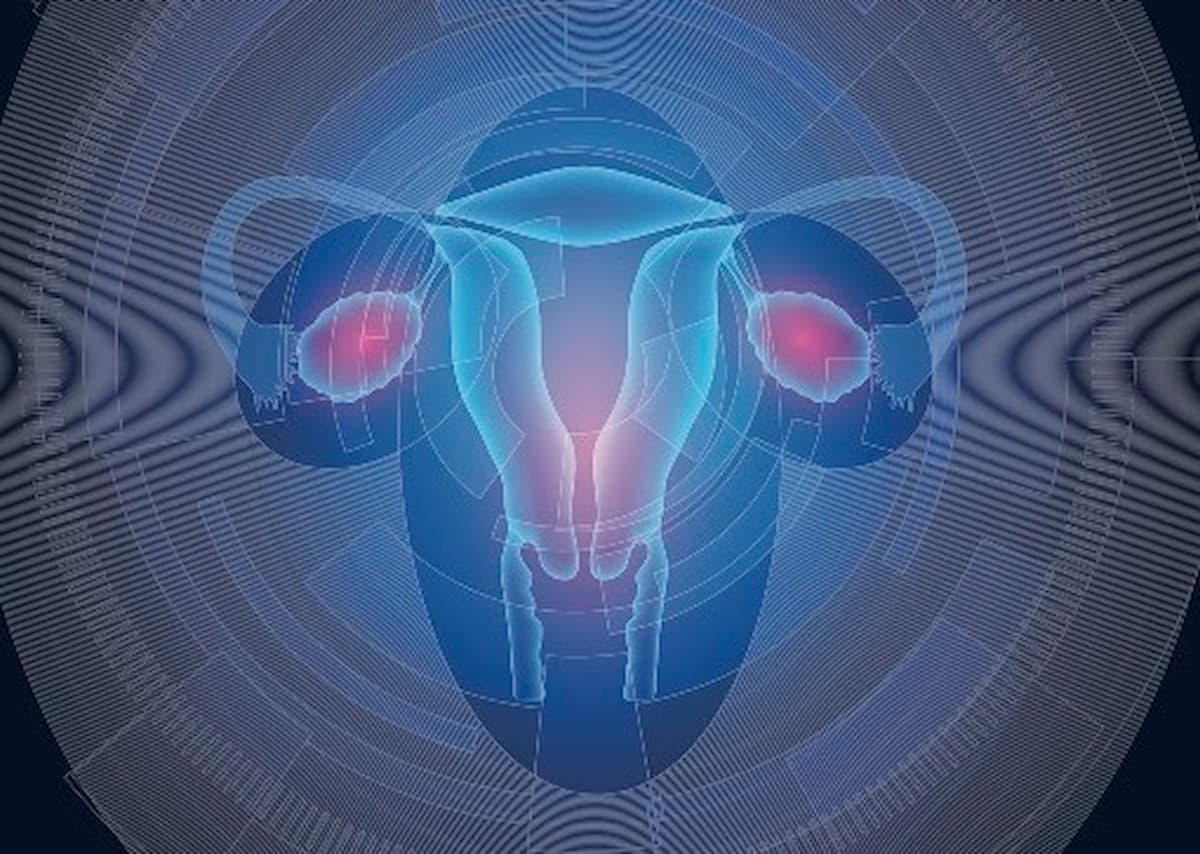Adding Chemo to Radiotherapy Did Not Improve Survival Outcomes in Cervical Cancer
The addition of chemotherapy to radiotherapy did not show significant improvements in OS when compared with radiotherapy alone in patients with intermediate-risk cervical cancer.
The addition of chemotherapy to radiotherapy elicited a 5-year OS rate of 87% vs 87% with radiotherapy alone in patients with intermediate-risk cervical cancer.

Adding chemotherapy to radiotherapy did not correlate with favorable overall survival (OS) outcomes in patients with intermediate-risk cervical cancer, according to results from a cohort study published in JAMA Oncology.1
Patients who received chemoradiotherapy showed a 5-year OS rate of 87% (95% CI, 0.86-0.87) compared with 87% (95% CI, 0.86-0.87) in those who received radiotherapy alone. The 10-year OS rate was 82% (95% CI, 0.81-0.82) and 77% (95% CI, 0.76-0.78), respectively. There were 56 deaths in the chemoradiotherapy group and 64 deaths in the radiotherapy alone group (HR, 0.85; 95% CI, 0.59-1.23; P = .38). Subgroup analyses factoring based on histology, tumor size, surgical approach, brachytherapy, and lymphovascular space invasion presence also showed no significant differences.
The study authors noted that, without accounting for the uncertainty associated with missing data, the study could detect a hazard ratio (HR) of 0.60 or less, and assuming a constant hazard rate, the HR correlates to a 5.0% difference in 5-year survival (92% vs 87%). When the primary analysis was conducted in patients with complete data, results were comparable (HR, 0.82; 95% CI, 0.53-1.25; P = .36).
“This cohort study showed no significant OS benefit associated with the addition of chemotherapy to radiotherapy for patients with intermediate-risk cervical cancer,” lead study author Núria Agustí, MD, of the Department of Gynecologic Oncology and Reproductive Medicine at the University of Texas MD Anderson Cancer Center, and other study authors stated in the paper. “These results are expected to provide guidance on the role of chemoradiotherapy in this population. However, the sample size of this trial may not be sufficient to provide conclusive evidence for OS.”
The cohort study used data from a total of 1116 patients in the National Cancer Database who were diagnosed with cervical squamous cell carcinoma, adenosquamous carcinoma, and adenocarcinoma between January 1, 2010, and December 31, 2020, and who underwent radical hysterectomy and lymph node assessment as primary treatment followed by adjuvant radiotherapy or single agent chemoradiotherapy. Only those without distant metastases and pathologically negative lymph nodes were included. Patients diagnosed before 2010, with positive tumor margins, parametrial invasion, or history of another tumor were among those excluded. Tumor size and lymphovascular space invasion presence were used to define early-stage intermediate-risk cervical cancer.
The median age of patients at diagnosis before matching was 47.0 years in the chemoradiotherapy arm and 47.8 in the radiotherapy arm; 63.6% and 65.9%, respectively, were non-Hispanic White, 84.5% and 85.5% had a Charlson Comorbidity Index score of 0, 39.3% and 51.0% had a tumor size between 2 cm and 4 cm, 49.3% and 48.1% had grade 2 disease, 70.0% and 74.2% did not have brachytherapy, 54.7% and 54.9% had open surgery, and 70.3% and 71.0% had lymphovascular space invasion present. Histology was classified as squamous cell in 56.3% and 66.1%, adenocarcinoma in 33.8% and 27.9%, and adenosquamous in 9.9% and 6.0%.
Of the patients included in the study, a mean of 630 (56.5%) patients received chemoradiotherapy, and 486 (43.5%) patients received radiotherapy alone. Results showed that adenocarcinoma and adenosquamous histology were indicators of more frequent chemoradiotherapy (50%) than in squamous cell carcinoma (40%; risk ratio, 1.26; 95% CI, 1.10-1.44). Chemoradiotherapy also was more common in patients with tumors larger than 4 cm (49%) than with tumors sized 2 cm to 4 cm (37%); patients with tumor size of 21 mm to 25 mm received chemoradiotherapy in 35% (95% CI, 29%-42%) and with tumors sized 46 mm to 50 mm in 51% (95% CI, 45%-54%). Tumor grade, Charlson Comorbidity Index, and lymphovascular space invasion presence were associated with chemoradiotherapy.
The trial’s primary outcome was overall survival. Secondary outcomes include identifying factors that were associated with chemoradiotherapy use.
The study authors highlighted the phase 3 GOG-0263 (NCT01101451) trial that is evaluating chemoradiotherapy vs radiotherapy alone in patients with intermediate-risk cervical cancer as a relevant study that will have more data on this population. Recent results presented at the 2025 Society of Gynecologic Oncology Annual Meeting on Women’s Cancer showed that chemoradiation led to a greater drop in quality of life than radiation alone.2
References
- Agustí N, Viveros-Carreño D, Wu CF, et al. Adjuvant chemoradiotherapy vs radiotherapy alone for patients with intermediate-risk cervical cancer. JAMA Oncol. Published online March 13, 2025. doi:10.1001/jamaoncol.2025.0146
- Chase DM, Huang Wei HQ, Koh WJ, et al. Patient-reported outcomes (PROs) on a randomized phase III clinical trial of adjuvant radiation (RT) versus chemoradiation (RT+CIS) in intermediate risk, stage I/IIA cervical cancer treated with initial radical hysterectomy and pelvic lymphadenectomy (NCT #01101451). Presented at the 2025 Society of Gynecologic Oncology Annual Meeting on Women’s Cancer (SGO); March 14-17, 2025; Seattle, WA.